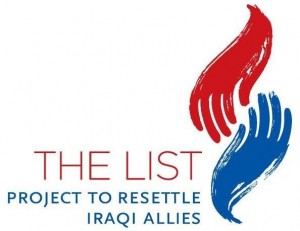After the First Gulf War the U.S. military set up Operation Provide Comfort to create a safe haven for Iraqi Kurds in the Kurdish district in northern Iraq. Many of the Iraqis living in the safe haven were seen to be affiliated with the United States.

Three Kurdish evacuees walk to the reception center at Andersen Air Force Base, Guam, after arriving on a civilian charter flight from Turkey on Sept. 17, 1996, as part of Operation Pacific Haven.
In 1996, when Saddam Hussein attacked the safe haven, President Clinton and his National Security Council recognized that the traditional resettlement process would be ill-equipped to protect these Iraqis. He soon ordered Operation Pacific Haven, whereby the Pentagon swiftly moved 6,600 Iraqi Kurds across the border into Turkey. They were held briefly in Turkey to undergo pre-airlift security screening before being flown to Guam. Once in Guam, the full asylum process took place out of harm’s way. The process also moved at an expedited pace, taking an average of 90-120 days. In total, Operation Pacific Haven cost $10 million and lasted 281 days between September 1996 and April 1997.
“[o]ur success will undoubtedly be a role model for future humanitarian efforts.” Operation Pacific Haven Task Force Commander Maj. Gen. John Dallegher, upon completion of the airlift of Iraqis
Serendipitously, the institutional knowledge to carry out a similar operation clearly resides at the Department of State and at the National Security Council and stands ready to be tapped: the current Assistant Secretary of State for Population, Refugees, and Migration, Eric Schwartz, served as the coordinator for the 1996 Guam airlift operation while on the staff of the National Security Council. Samantha Power, now the Senior Director for Multilateral Affairs at the National Security Council, presently holds the same position that Schwartz held during Operation Pacific Haven.
